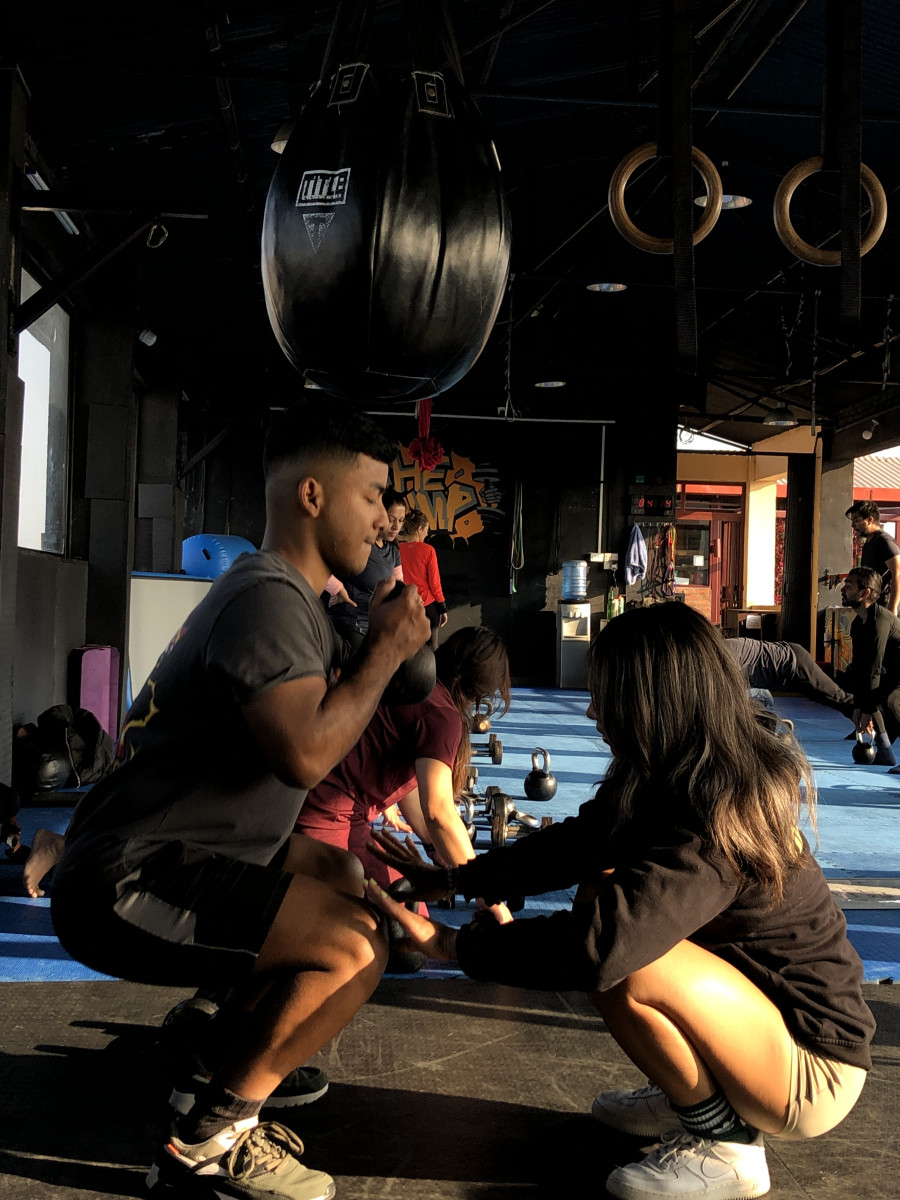Life & Style
Cracking the winter wellness code
Fitness trainer Saprina Shrestha shares her tips for maintaining a consistent fitness routine in the cold season.
Aarati Ray
As the winter season sets in, the allure of cosy blankets and staying snug indoors gets stronger for most of us. However, it also introduces a reluctance to venture out early for a run or hit the gym for a workout. Balancing the desire for warmth with the commitment to fitness can be a bit tricky during this season.
Saprina Shrestha, the manager of The Pump and a personal and group fitness trainer, offers practical insights and tips to help you remain active and stick to your fitness routine in the chilly weather.

How does the winter season impact people’s fitness routines and motivation?
Winter significantly influences the routines and motivation of both fitness enthusiasts and athletes. As a trainer, I find early morning classes challenging in winter. Cold temperatures and shorter days make it difficult to muster the motivation to exercise. The prospect of facing the cold outdoors is unappealing, leading many to opt for the warmth of indoor cosiness rather than working out. This affects the motivation of both trainers and individuals trying to maintain a fitness routine. This is why having the right mindset is necessary. Focusing on our goals helps maintain motivation.
The main challenge is the weather itself. Waking up early in the cold to go to the gym (or even exercise indoors) is not very appealing. Another challenge is setting unrealistic goals. Establishing demanding fitness targets during winter can disrupt routines and lead to frustration, causing some to take breaks that ultimately hamper or delay their goals. Additionally, it can be difficult for some to take showers after every workout session.
Winter also brings about seasonal depression, which further demotivates us from working out.
What types of fitness routines are effective for winter?
There isn’t a specific routine exclusively for winter or summer; your workout remains consistent if you regularly attend the gym. However, if starting the gym during winter proves challenging, especially in the early mornings, consider beginning your fitness journey in a different season. You can do simple activities like walking or jogging near your home if you are starting in winter. If going to the gym is impractical, exercising at home—doing simple exercises like push-ups and squats—is a viable alternative. The key is to stay active, so if gym or outdoor exercises are not feasible, maintain your routine indoors.
Indoor or outdoor workout—which is better for winter?
As a trainer, I won’t say one is better than the other. Both have their pros and cons. Outdoor exercise connects you with nature, boosting mental and physical health, but in winter, indoor workouts might be the more sensible choice for many as exercising outside when it’s cold can be challenging.
There are numerous good options for indoor exercises during winter. For a heart-pumping session, try cardio activities like jumping rope, fast workouts, high-intensity interval training (HIIT), or indoor cycling. Strengthen your muscles with squats, push-ups or weights. Engage in indoor sports like basketball or badminton. If possible, swim in an indoor pool—it’s a great full-body workout. The key is to choose exercises you enjoy to stay active indoors.
How should food habits be adjusted during winter to stay fit?
Not many changes are needed in what you eat during summer and winter, but it’s crucial to be extra careful with homemade and healthy foods in winter. Cold weather can make us more susceptible to illness or digestive issues, so prioritising homemade meals is wise. Whether it’s summer or winter, focus on consuming healthy homemade food. In winter, people often crave more food and may overeat, especially with fast food. Therefore, being mindful of what and how much you eat is necessary.
Dehydration can occur in winter as people tend to drink less water. Increased water intake is essential, especially if you’re working out, so remember to drink more water in winter. Consider trying green tea as an alternative to stay hydrated.
What are your tips for maintaining a consistent fitness routine in winter? What common mistakes should be avoided?
In winter, I’ve noticed that people often experience more soreness after working out compared to other seasons. Trying a sauna or alternating hot and cold showers can be helpful.
Ensuring a good night’s sleep of at least eight hours is vital during winter, as our bodies need more rest to recover from soreness. Minor injuries can be more painful in winter as well, so it’s essential to be cautious and use necessary accessories like kneecaps and wristbands, especially when working out in the gym.
For indoor exercises during winter, consider working out with a partner or in a group to boost motivation and energy levels. Avoid completely halting exercise during winter, as consistency and discipline are crucial for sustainable fitness. Life events may lead to long breaks but don’t hesitate to return.
Similarly, avoid setting unrealistic goals. Especially in winter, start with a goal for one week and gradually progress. Take slow steps and be your own motivator.
Fitness is vital, whether at home or the gym. Many, especially elders and married women, think they don’t have time for a fitness routine. I suggest finding time for yourself to follow a healthy routine. Age and relationship status should not hinder you from caring for yourself and dedicating time to your well-being.




 14.12°C Kathmandu
14.12°C Kathmandu










